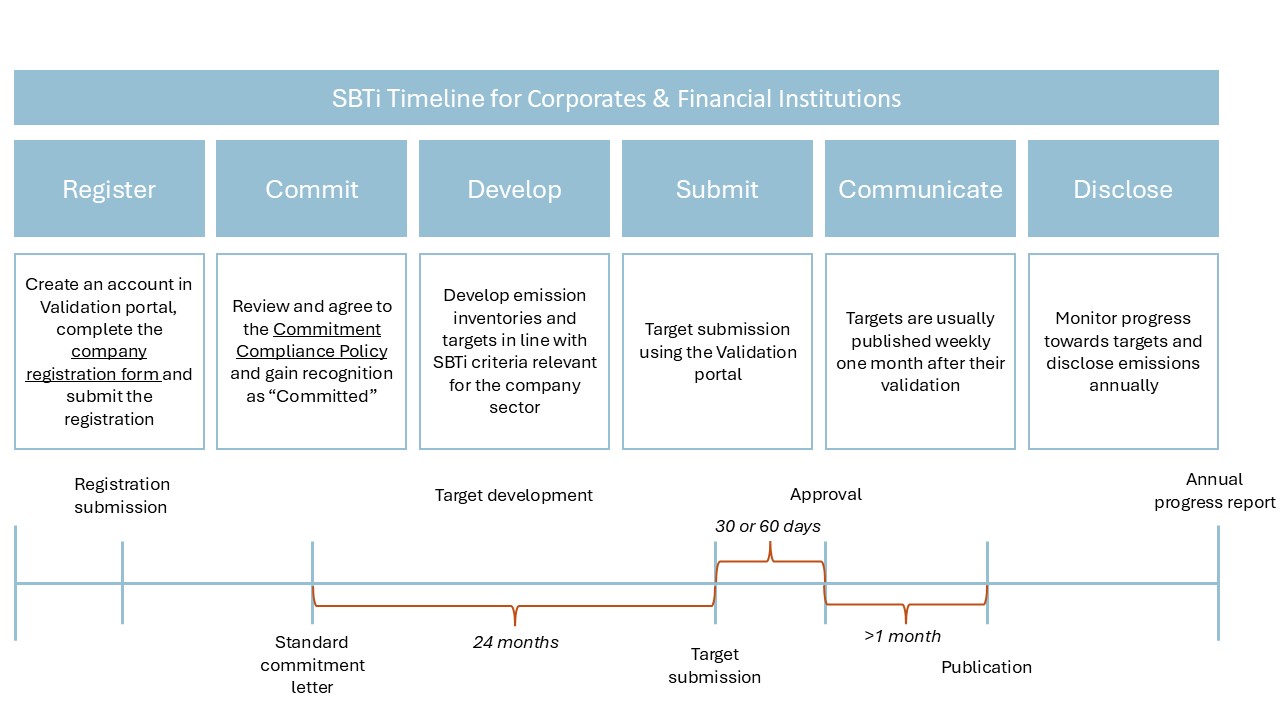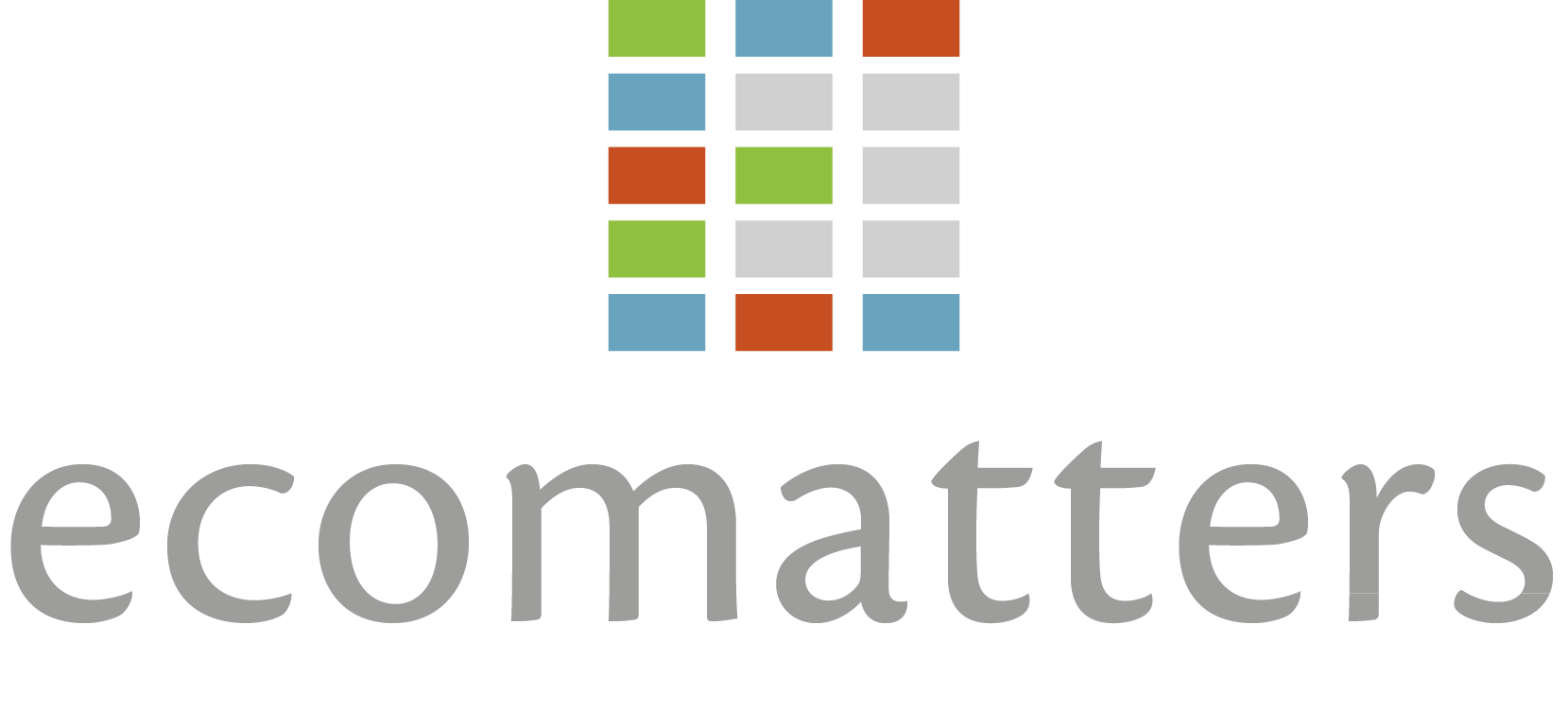In the Paris Agreement, the globally supported objective is to limit the temperature increase to 1.5 °C to prevent irreversible environmental changes. The Science Based Targets initiative (SBTi) is an international collaboration that supports companies in setting emission reduction targets aligned with the Paris Agreement, following the latest climate science. This results in science-based targets (SBTs) that aim to reduce GHG emissions by 42% by 2030 and achieve net zero by 2050. To achieve these goals, the focus is primarily on CO2 emissions, as they are a major contributor to temperature increases.
Near-term vs. Net Zero Targets
The SBTi framework distinguishes between near-term and net zero science-based targets. On one hand, near-term targets focus on significant emission reductions within the next 5–10 years, aiming for at least 42% reduction by 2030. On the other hand, net zero targets aim for longer-term reductions, ensuring a 90% reduction by 2050.
To support these targets, companies are encouraged to shift to 100% renewable electricity by either 2030 for near-term targets or by 2050 for net zero targets. Sector-specific guidelines provide tailored reduction pathways for industries, including high-emission sectors like chemicals and manufacturing.
Why should you make an SBTi commitment?
There are several compelling reasons for companies to make an SBTi commitment, including:
- For strategic positioning based on actual commitment
- When customers require supplier commitment to improve their Scope 3 emissions
- When (regulatory) reporting requirements need substantiation
- To set your targets within an internationally recognised framework
Who is the SBTi for?
The SBTi focuses on pushing corporate climate action and drives companies from a broad variety of sectors to reduce emissions, including SMEs. For SMEs, they can follow the SME route after meeting several conditions including the sector, volume of GHG gasses produced in Scope 1 and 2 at the same time as meeting the size, revenue or exclusion from FLAG (Forest, Land, and Agriculture) emissions.
Public organisations, educational institutions, and non-profit organisations can now commit to the SBTs under specific routes, where SBTi currently does not validate their claims.
The science-based commitment criteria
1. Baseline calculation
Emissions including Scope 1 (direct emissions), Scope 2 (indirect emissions), and Scope 3 (indirect emissions in the value chain) are calculated following standards set out in the GHG Protocol (Scope 1, 2 and 3) or CDP supply chain program (Scope 3).
2. Target setting
The SBTi sets specific requirements for which emissions must be included within the targets boundaries. These are:
- Scope 1 and 2: At least 95% of emissions must be included for both near-term and net zero targets.
- Scope 3:
- For near-term targets: Must cover at least 67% of Scope 3 emissions if they represent more than 40% of the total.
- For net zero targets: Must cover at least 90% of Scope 3 emissions.
To calculate Scope 1 and 2 emissions, the SBTi accepts two approaches:
- The Absolute Contraction Approach (ACA) — sets absolute emission reduction targets.
- The Sectoral Decarbonization Approach (SDA) — sets physical intensity targets relative to a specific business metric and is available for a limited number of sectors.
3. Tracking
Tracking emission reduction starts with establishing a base year. An appropriate base year must have verifiable Scope 1, 2, and 3 data, represent a typical company’s year, leave sufficient forward-looking ambition, and allow for recalculations.
Timeline and process
Setting science-based targets with the SBTi demands dedication in terms of involvement, effort, and budget.

The process starts with the registration and Standard Commitment Letter. Once the SBTi has received and confirmed the application, they will publish the company on their website as ‘Committed’. After the commitment, companies can start developing their targets in line with the science-based criteria. The SBTi provides detailed guidance on their website. Additionally, many sectors have specific guidance and requirements available.
Once a company has signed the Commitment Letter, the next step is to develop, validate, and publish its science-based targets within 24 months. The SBTi reviews the submission, validates the methodology against the science-based criteria, and provides feedback within the stated validation periods (30 days for near-term targets and 60 days for net zero targets).
After approval, the initiative sends a welcome package with support on how to communicate SBTs. Additionally, the SBTi will publish the targets on their website, classifying the company as a ‘Company taking action’. In general, SBTs are published weekly, with approved targets published one month after the approval, if not agreed otherwise. If the publication takes longer than 6 months after the approval, then the revalidation process is necessary to ensure the alignment with the latest science-based criteria.
Every calendar year, the company should disclose its emissions to monitor progress in reaching the set targets. The SBTi recommends including emissions in annual reports, sustainability reports, or similar official communications such as CSRD, CDP or other publicly available statements.
Sectoral Initiatives
The SBTi provides sector-specific guidance to help companies align their emission reduction strategies with industry standards. These sectoral initiatives offer tailored pathways for high-emission industries, such as power, transport, chemicals, and cement, ensuring that reduction efforts are both ambitious and achievable. By following these targeted approaches, companies can adopt emission reduction measures that are most relevant to their sector’s unique challenges and opportunities. This alignment not only enhances credibility but also accelerates progress towards achieving science-based targets.
FLAG Emissions
Forest, Land, and Agriculture (FLAG) emissions account for a significant portion of global GHG emissions, primarily driven by land use change, deforestation, and agricultural practices. Recognising the impact of these emissions, the SBTi has introduced specific guidance for FLAG emissions, requiring companies in these sectors to set separate science-based targets that address both CO2 and non-CO2 emissions like methane and nitrous oxide. This approach ensures that emission reduction efforts extend beyond traditional industrial sources to include the substantial impact of land and agriculture, thereby supporting a more comprehensive path to net zero.
Setting your targets with the support of Ecomatters
As a quantitative sustainability consultancy, Ecomatters is experienced in GHG emissions accounting, calculation, and reporting on Scope 1, 2, and 3 emissions. We can support your company with setting SBTs or at different stages in aligning with the SBTi process. Our support covers data collection, GHG calculations, selecting the correct methodology, or validating your approach. We are also eager to collaborate and support you from submitting your Commitment Letter to creating your annual progress report.
If you are interested in finding out more about how Ecomatters can support you, plan an call with one of our experts or contact us.
Related Services
Contact us
Brienne Wiersema
Mieke de Jager
Find out more
Science-based targets (SBTi) has been developing sector-specific guidelines to facilitate the adoption of science-based targets across various industries, including apparel,…
The Science Based Targets initiative (SBTi) has launched sector-specific guidance to support industries with setting emission reduction targets aligned with…
Call with our consultant
Do you want to know more about how we can help? Schedule a call with one of our consultants to ask your questions.



